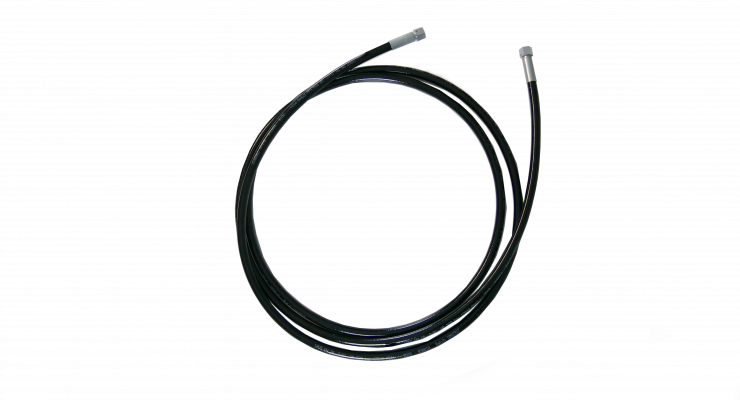Why can’t we have a lighter and more flexible hose?
Posted
A lot of dispensing applications require some reach, typically the dispense equipment is quite heavy and bulky but the application spread over an area. So, depending on how big the application area is, the hoses need to be sized accordingly.
There are a few thinking we need to consider when sizing hoses.
- The length of hose required to reach around the application area,
- The pressure of the system,
- Frictional loss,
- And manoeuvrability / how easy it is to handle the hose.
Length of hose required – in many ways this is the simple part, and is decided by the application, however in some instances the length of hose is constrained by frictional loss, so other methods need to be used to get the needed reach, we discuss this in more detail later.
Pressure of the System – To get higher output (more Litres per minute) the system pressure needs to increase; every system has a max output pressure, and the pressure rating of the hoses must always be higher for safety reasons.
Frictional loss – typically the higher the viscosity / thinker the product, the higher the frictional loss. Frictional loss is the resistance created from the product passing through a hose and contacting the inside wall of the hose creating friction. By increasing the bore size of the hose, the effect of frictional loss can be reduced, but bigger bore hoses are typically heavier and less manoeuvrable, which brings us onto the last point
Manoeuvrability – The operator needs to be able to get around the application area, without battling too heavy or stiff a hose.
In some instances – where the product is thick (hose needs to be large bore and is therefore heavy), the system pressure is high (hose needs to be heavy duty and is therefore stiff), and the application is spread over a large area (more frictional loss over the length of hose reducing the output) – it is not possible to specify a satisfactory hose. Therefore, other methods need to be used to get more reach:
In the simplest form a Jib Arm can be used to support the bulk of a heavy hose, with a whip-end drop down to the operator, but whilst this option takes some load off the operator, it does have its limitations; hose lengths are still constrained by frictional loss. And the Jib Arm needs to be mounted in the optimal position, without obstructing other equipment e.g. overhead cranes.
Mobile dispense equipment, we can mount dispense equipment on a mobile chassis with castors so the operator can move it around the application area and therefore get away with shorter and more manageable hoses, again this is a good option in many instances, but it does also have its constraints; if a continues application of adhesive is needed the whole way around a large workpiece, and the adhesive has a short ‘pot life’/‘open time’ a second operator may be required to push the equipment around. Plus consideration must be made for the services the dispensing equipment needs to run i.e. power and compressed air.
‘Run on rails’ dispense equipment. As the name suggests – tracks are set into the floor and the dispensing equipment is mounted on a Bogie – to run up and down the tracks, services (power and compressed air) are run through energy chain the length of the track. This configuration works well for long linear applications e.g. applying adhesive the length of truck chassis, or where multiple application stations are laid out in a line.
Please get in touch to discuss your application.

